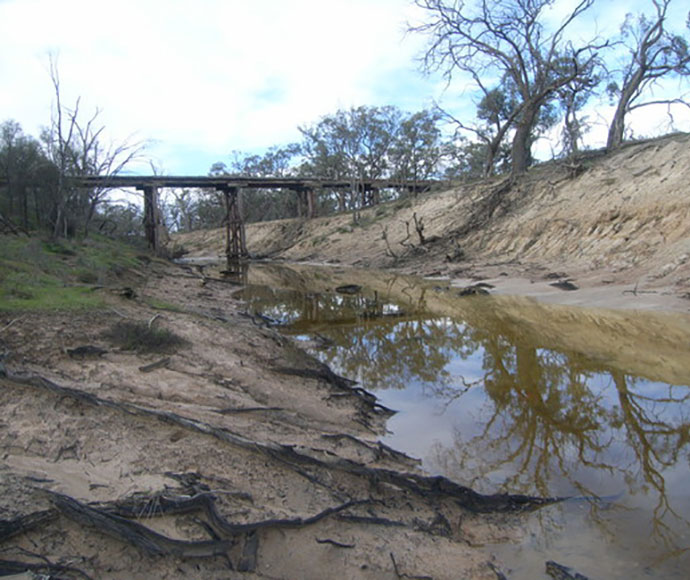The main threats to wetlands in New South Wales are:
- river regulation and water diversion
- development and catchment disturbance
- introduction of weeds and pest animals
- climate change.
River regulation and water diversion
River regulation and water diversion are the biggest threats to NSW wetlands. These terms refer to altering the natural flow of rivers, streams, floodplains and wetlands.
The most common methods of doing this are by building dams, weirs and other structures on rivers and waterways. These are listed as key threatening processes in New South Wales environmental law.
River regulation and water diversion are carried out to reduce the risk and severity of floods and to make water available for urban, industrial and agricultural uses. They lead to changes in river flows, with many NSW wetlands drying out as a result.
Conversely, water diversion is used to ensure some wetlands store water for town supply or irrigation, which prevents wetlands drying out as they would naturally during drought. This can cause acid sulfate to form and can lead to toxic quantities of iron, aluminium and other metals being released.

Inland acid sulphate soil, Mallan Mallan Creek
River regulation and water diversion can result in:
- plant communities disappearing
- animals dying
- lower levels of breeding for waterbirds
- fish being blocked from migrating upstream or downstream
- fish becoming prey for birds when they gather downstream of barriers.
Development and catchment disturbance
Urbanisation, agriculture and coastal development often lead to wetlands being cleared.
The water quality and nutrient levels of wetlands that remain uncleared are often altered dramatically.
Development can cause the following changes to wetland catchments:
- greater fluctuations in river flows
- more sedimentation
- an increase in nutrients such as nitrogen and phosphorous, causing a profound effect on the food chain
- more rapid changes in salt levels in water
- more pests and weeds
- outbreaks of organisms such as blue-green algae, which are toxic to some aquatic plants and animals and make water unsuitable for urban, agricultural and recreational uses.
Introduction of weeds and pest animals
Weeds and pest animals compete with native wetland species and habitats and can end up displacing them altogether:
- In coastal wetlands, common weeds include the flowering plant lantana, the floating fern salvinia and the seaweed caulerpa. Pest animals include pigs, which can affect water quality and destroy habitats through digging and wallowing.
- In inland wetlands, common weeds and pest animals include the introduced plant lippia, pigs and European carp, which can displace native fish.
Climate change
Wetlands are expected to face some of the most severe impacts from climate change, which is listed as a key threatening process under the Biodiversity Conservation Act 2016.
Climate change leads to changes in rainfall, higher temperatures and greater evaporation. This means surface and groundwater supply drop, putting more pressure on wetland plants and animals.
The department's document Priorities for biodiversity adaptation to climate change